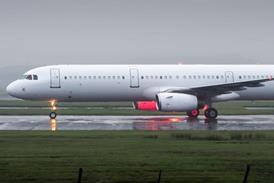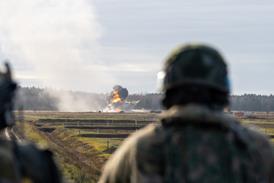US legislators want DHS to evaluate other airliner missile-protection options as it searches for layered solution
The US Congress has directed the Bush administration to invest in alternatives to laser jammers to protect commercial airliners from missile attack, with one group of legislators singling out the Raytheon Vigilant Eagle ground-based high-power microwave system as a financially “compelling” option.
The move comes as the first laser-based directed infrared countermeasures installed on airliners prepare to enter flight tests this week after a two-month delay. The flight tests are the final stage of a two-year study by the Department of Homeland Security (DHS), which favours the concept of a layered defence system to counter shoulder-fired missiles, but has restricted the study to laser jammers.
Northrop Grumman and BAE Systems are integrating rival directed infrared countermeasure (DIRCM) systems on commercial widebodies for the DHS study. Northrop’s pod is expected to fly on a FedEx Express Boeing MD-11 this week. BAE’s first flight of its pod installed on an American Airlines Boeing 767-200 is scheduled for mid-November.
DHS is required to wrap up the evaluation in January. The results are intended to inform a go-ahead decision for follow-on funding, but there is a narrow window. The administration releases the fiscal year 2007 budget request in early February, leaving only a few weeks to make the decision and insert the funds into next year’s budget.
Meanwhile, a core group of legislators – called the Electronic Warfare Working Group – has added $10 million to the FY06 DHS budget to be used to evaluate “emerging civil aviation defence technologies”.
The working group, founded by Representative Joseph Pitts, finds fault with the DHS focus on laser jammers. “No single solution is adequate,” says an issue brief posted on 18 October. “DHS should develop a layered response that interweaves several technologies and strategies.”
The group’s issue brief notes that Vigilant Eagle and “others like it are plausible alternatives, or could be additions, to the on-board systems currently under evaluation by DHS”. Vigilant Eagle uses a directed electromagnetic pulse to scramble a shoulder-fired missile’s guidance system. Its sensors and high-power microwave phased array can be installed at a major airport for an average cost of about $25 million. Raytheon says a demonstration system could be installed at the first airport within 12-18 months after the project obtains funding.
STEPHEN TRIMBLE/VIRGINIA BEACH
Source: Flight International























